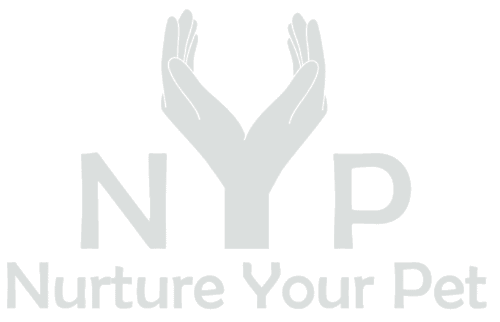1. Stay Calm
The worst thing you can do when your dog is jumping on you or someone else is to yell at or hit them. Your dog might fear you, act out in aggression, or even think you want to play. At best, you will end up with a dog who is still jumping at you; at worst, you have a dog who reacts to you with a bite.
Moreover, our dogs are extremely intuitive. They can easily pick up on our moods with subtle cues, so try to set a positive, matter-of-fact tone. Avoid raising your voice, and focus on giving short, direct commands.

2. Ignore Jumping
If your dog’s jumping is so constant that you cannot get their attention on you with a command or treat, you should ignore them completely. Do not engage with your dog while they are jumping. Instead, immediately turn around while saying “Oops!” This will teach them that jumping is not a behavior that will result in love and affection. Instead, they should only receive praise when they stop jumping and settle down. The Humane Society suggests waiting until all four paws are on the floor.
3. Interrupt Jumping
Once your dog is able to get their jumping under control with your guidance, be sure to interrupt them every time they do it. If one guest does not mind your dog’s jumps (and maybe even rewards them), you still need to put a stop to the behavior as soon as it starts. Your training only gets stronger if you can catch the behavior at the correct time.
4. Teach an Alternative
Give your dog a command to teach them what they should do instead of jumping on people. This doesn’t have to be a ‘sit.’ You can send them to their bed, put them in a ‘lay down,’ or you could even have your dog show you their belly. It’s up to you what command you use; just make sure that it doesn’t involve any jumpy behavior. “Teach your dog to do something that is incompatible with jumping up, such as sitting,” the Humane Society writes. “They can't sit and jump up at the same time. If they are not sitting, they get no attention.” Also, your dog should already be fully familiar with the command.

5. Stay Consistent
Perhaps the most essential step is to remain consistent with your training. You have to have the same exact reaction every single time your dog jumps up on people. The key is to reward the right behaviors and guide them when they are performing the wrong ones. You should also double check that everyone else in your house is also following the same training.
6. Reevaluate Your Plan
If none of this is working, you should try reassessing your training plan. You might need to make modifications to your home and habits to help set your dog up for success. If you simply cannot get your dog’s attention, the Humane Society recommends that you:
“1. Put your dog in their crate.
2. Confine them in another room.
3. Restrain your dog on a leash and ask them to sit while the guest enters. Be sure to reward good behavior.”

Another thing to keep in mind is that you should always stay prepared to redirect your pet’s attention. Be ready for jumping at any time and practice with your dog every time you come home. Preventive Vet suggests following this list of tips to get equipped for training:
“1. Keep treats in your car so you can grab a few before you go inside to greet your dog.
2. Hang a jar of treats on the wall (high enough that your dog can't reach it) by doorways. There are lots of great ideas for wall-mounted treat jars that you can find online or DIY.
3. Have a dog "cookie" jar on your kitchen counter.
4. Keep a fun dog toy in the garage so you can grab it before you walk inside.
5. Always wear a treat pouch, like this one I use from Petsafe, when on walks with your dog.
6. Remember that your attention can be a real-life dog training reward! Looking at, touching, or talking to your dog, even sternly, is rewarding to them — so make sure you're using these to reward your dog for behaviors you like. And on the flip side, make sure you aren't rewarding your dog with these things when they are jumping.”
Lastly, contact your vet for further information about your breed and what you can do to improve your training routine. Your dog might be a jumpy, energetic type that needs a lot more exercise; or, you could have a dog that should not be jumping at all (usually for health reasons). You may need to switch up your pet’s form of exercise or enroll them in an agility class to burn that energy. Reach out to veterinarians and pet behaviorists for a professional evaluation.

Some dogs are more hyper than others but jumping is a behavior that can be controlled with proper training. It will take time, effort, and changes for both you and your dog. Nevertheless, a consistent training practice combined with the recommendations in this blog should give you relief from your pup’s abrupt springs and bounds. Months of training can be discouraging, but do not give up on your routine. Have faith in your dog! The most integral part of changing your pet’s behavior is simply staying at it.
You might be interested in reading more articles on Dog Training.
Thank you to the following sources:
https://www.humanesociety.org/resources/stop-your-dog-jumping
https://www.preventivevet.com/dogs/stop-your-dog-from-jumping
https://www.akc.org/expert-advice/training/how-to-stop-your-dog-from-jumping-up-on-people/








